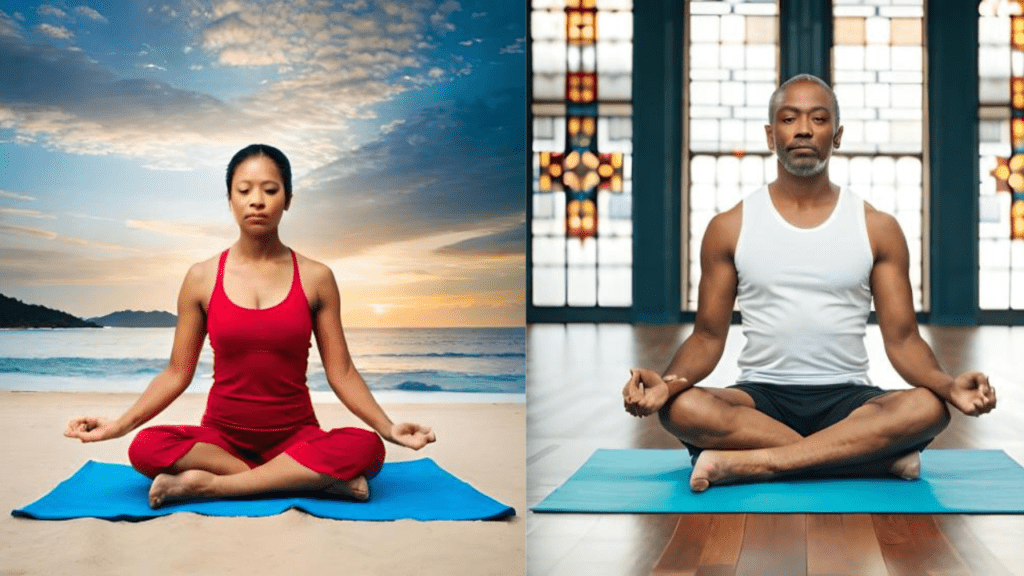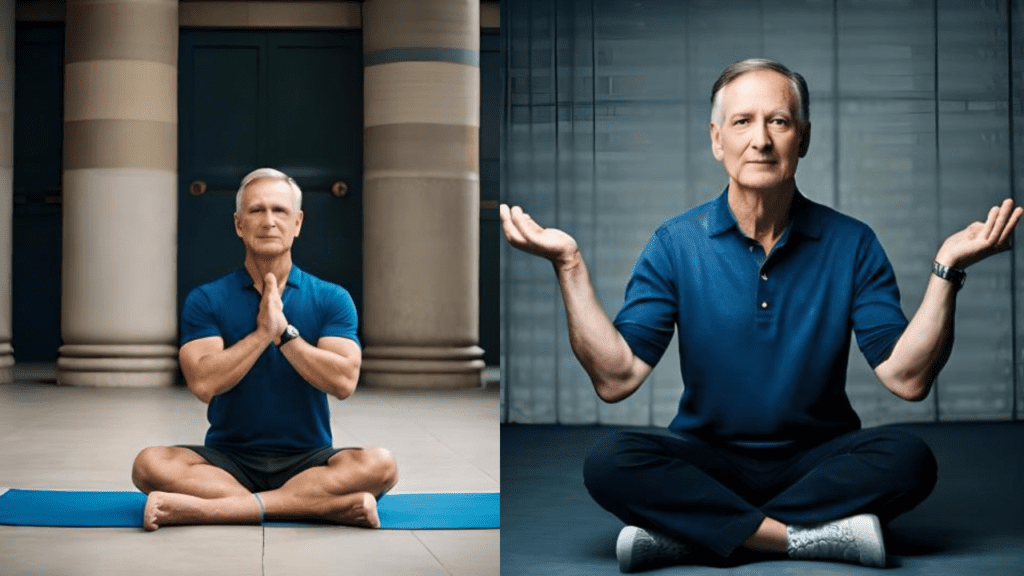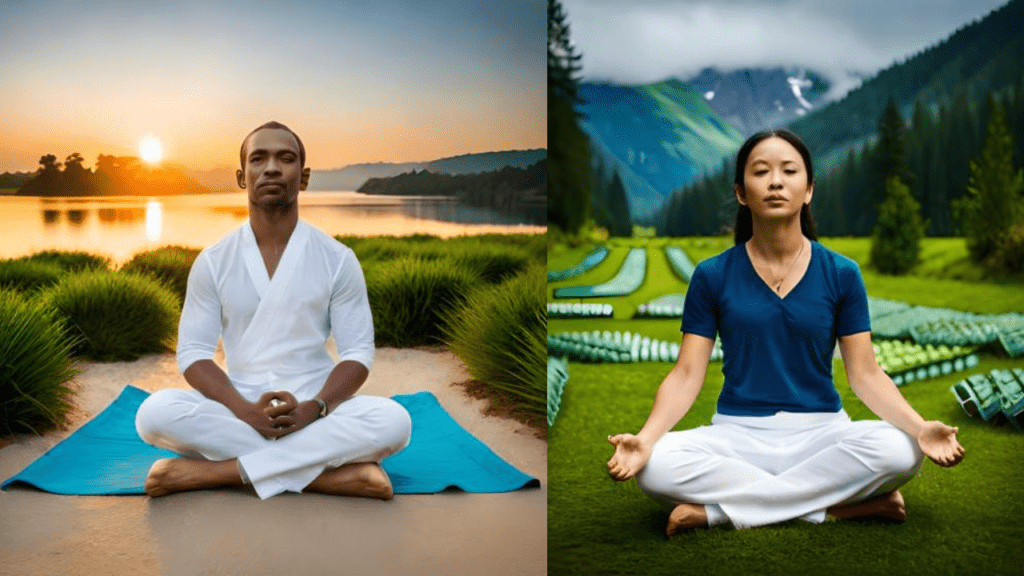Introduction
In today’s fast-paced world, finding moments of peace and tranquility has become increasingly important. Meditation offers a powerful way to calm the mind, reduce stress, and improve overall well-being. However, many beginners struggle to know where to start and how to meditate properly. In this article, we will provide a comprehensive guide on how to meditate effectively, allowing you to embark on a journey of self-discovery and inner peace.
Table of Contents
Understanding Meditate Properly
Meditation is a practice that involves training the mind to achieve a state of calmness, clarity, and focus. It has been used for centuries in various cultures and religions as a means to attain inner peace and spiritual growth. Meditation allows us to step away from the constant stream of thoughts and distractions, bringing our attention to the present moment.

Creating a Suitable Environment For Meditate Properly
To meditate properly, it is essential to create a conducive environment that promotes relaxation and focus. Find a quiet space where you can be undisturbed for the duration of your meditation session. Ensure the room is clean and free from clutter. You may choose to decorate the space with items that inspire tranquility, such as candles, incense, or soft lighting.
Choosing a Meditation Technique
There are several meditation techniques to choose from, each offering its own unique approach. It’s important to find a technique that resonates with you and aligns with your goals. Some popular meditation techniques include mindfulness meditation, loving-kindness meditation, and mantra meditation. Explore different methods and experiment to discover what works best for you.
Posture and Body Alignment
Maintaining the correct posture and body alignment during meditation is crucial for both comfort and focus. Find a position that allows you to sit upright with your spine straight. You can choose to sit on a cushion or a chair, ensuring that your body is relaxed yet alert. Avoid slouching or tensing your muscles, as this can hinder the flow of energy during meditation.

Focusing the Mind
One of the primary objectives of meditation is to cultivate a focused and calm mind. However, the mind tends to wander and get carried away by thoughts. To meditate properly, gently bring your attention back to the present moment whenever you notice your mind wandering. This process of refocusing trains the mind to stay present and reduces the influence of distractions.

Breath Awareness Meditation
Breath awareness meditation is a popular technique that involves focusing on the breath as a point of concentration. Find a comfortable position and bring your attention to the natural rhythm of your breath. Notice the sensations of inhaling and exhaling, observing the breath without trying to control it. Whenever your mind wanders, gently bring your attention back to the breath.
Guided Meditation
Guided meditation is an excellent option for beginners as it provides step-by-step instructions and guidance throughout the practice. You can find guided meditation recordings or apps that offer a variety of themes, such as relaxation, stress reduction, or self-discovery. Follow the voice instructions, allowing yourself to relax and fully immerse in the experience.
Mantra Meditation
Mantra meditation involves the repetition of a specific word or phrase, known as a mantra. Choose a mantra that holds meaning for you or use traditional mantras like “Om” or “Peace.” Sit comfortably, close your eyes, and repeat the mantra silently or aloud. As you focus on the mantra, allow other thoughts to fade into the background, creating a sense of inner stillness.

Loving-Kindness Meditation
Loving-kindness meditation, also known as metta meditation, cultivates feelings of love, compassion, and goodwill towards oneself and others. Begin by focusing on yourself and silently recite positive affirmations or phrases of well-wishes. Gradually expand your focus to include loved ones, neutral people, and even challenging individuals. This practice fosters empathy and promotes a sense of interconnectedness.
Overcoming Common Challenges
Meditation is a skill that requires practice and patience. It’s common to encounter challenges along the way. Restlessness, difficulty in focusing, and impatience are all normal experiences. When faced with challenges, approach them with curiosity and kindness. Experiment with different techniques, adjust your posture, and remind yourself that meditation is a journey of self-discovery and growth.
Establishing a Regular Practice
Consistency is key when it comes to meditation. Set aside dedicated time each day to cultivate your practice. Start with shorter sessions and gradually increase the duration as you become more comfortable. Find a time that works best for you, whether it’s early in the morning, during lunch breaks, or before bed. Remember, even a few minutes of meditation can have a profound impact on your well-being.
Benefits of Meditation
Meditation offers a wide range of benefits for both the mind and body. Regular practice can reduce stress, anxiety, and depression, improve focus and concentration, boost creativity, and enhance overall emotional well-being. It can also lower blood pressure, strengthen the immune system, and promote better sleep. The cumulative effects of meditation extend beyond the practice itself, positively impacting various aspects of life.

Meditation and Mindfulness
Meditation and mindfulness go hand in hand. Mindfulness is the practice of paying attention to the present moment with openness and non-judgment. Through meditation, we develop mindfulness skills that can be applied to daily life. By cultivating awareness and presence, we can navigate challenges, reduce reactivity, and find greater joy and contentment in each moment.

Incorporating Meditation into Daily Life
Meditation doesn’t have to be confined to a formal practice. It can be seamlessly integrated into daily life, becoming a way of being rather than a separate activity. Bring mindfulness to everyday tasks such as eating, walking, or even washing dishes. Take moments throughout the day to pause, breathe, and reconnect with the present moment. By infusing mindfulness into your routine, you can experience a deeper sense of fulfillment and peace.
Conclusion
Meditation is a transformative practice that allows us to cultivate inner peace, clarity, and well-being. By following the steps outlined in this guide, you can learn how to meditate properly and embark on a journey of self-discovery. Remember to be patient, embrace imperfections, and make meditation a regular part of your life. Through consistent practice, you can unlock the profound benefits that meditation offers.
FAQs (Frequently Asked Questions)
- Is meditation suitable for everyone? Yes, meditation is suitable for everyone. It can benefit people of all ages, backgrounds, and lifestyles. Whether you’re a beginner or an experienced practitioner, meditation offers numerous benefits for physical, mental, and emotional well-being.
- How long should I meditate each day? The duration of your meditation practice can vary depending on your preferences and schedule. For beginners, it’s recommended to start with shorter sessions, around 5 to 10 minutes, and gradually increase the duration as you become more comfortable. Ideally, aim for at least 20 minutes of meditation each day to experience the full benefits.
- Can I meditate lying down? While it’s possible to meditate lying down, it’s generally recommended to sit upright with a straight spine during meditation. Sitting promotes alertness and helps prevent falling asleep, as lying down can often induce a state of relaxation that may lead to drowsiness. However, if sitting is uncomfortable for you due to physical limitations, you can choose a comfortable lying position with proper support.
- What if I can’t stop my thoughts during meditation? It’s natural for thoughts to arise during meditation, and the goal is not to stop them completely. Instead, the practice is about observing the thoughts without judgment and gently redirecting your attention back to your chosen point of focus, such as the breath or a mantra. With time and practice, you’ll develop a greater ability to let go of distracting thoughts and cultivate a more focused and calm mind.
- How long does it take to experience the benefits of meditation? The benefits of meditation can be experienced from the very beginning, even after just a few minutes of practice. In the short term, you may notice a sense of relaxation, increased clarity, and reduced stress. However, the long-term benefits, such as improved emotional well-being, increased resilience, and enhanced focus, tend to unfold gradually with regular and consistent practice. It’s important to approach meditation as a lifelong journey rather than expecting immediate results.
Remember
meditation is a personal practice, and it’s important to find an approach and duration that works best for you. Consistency and patience are key. By integrating meditation into your daily routine, you can experience its transformative effects on your overall well-being.
Biden Student Loan Forgiveness Plan: A Comprehensive Beginner’s Guide to Breaking Free from Debt

